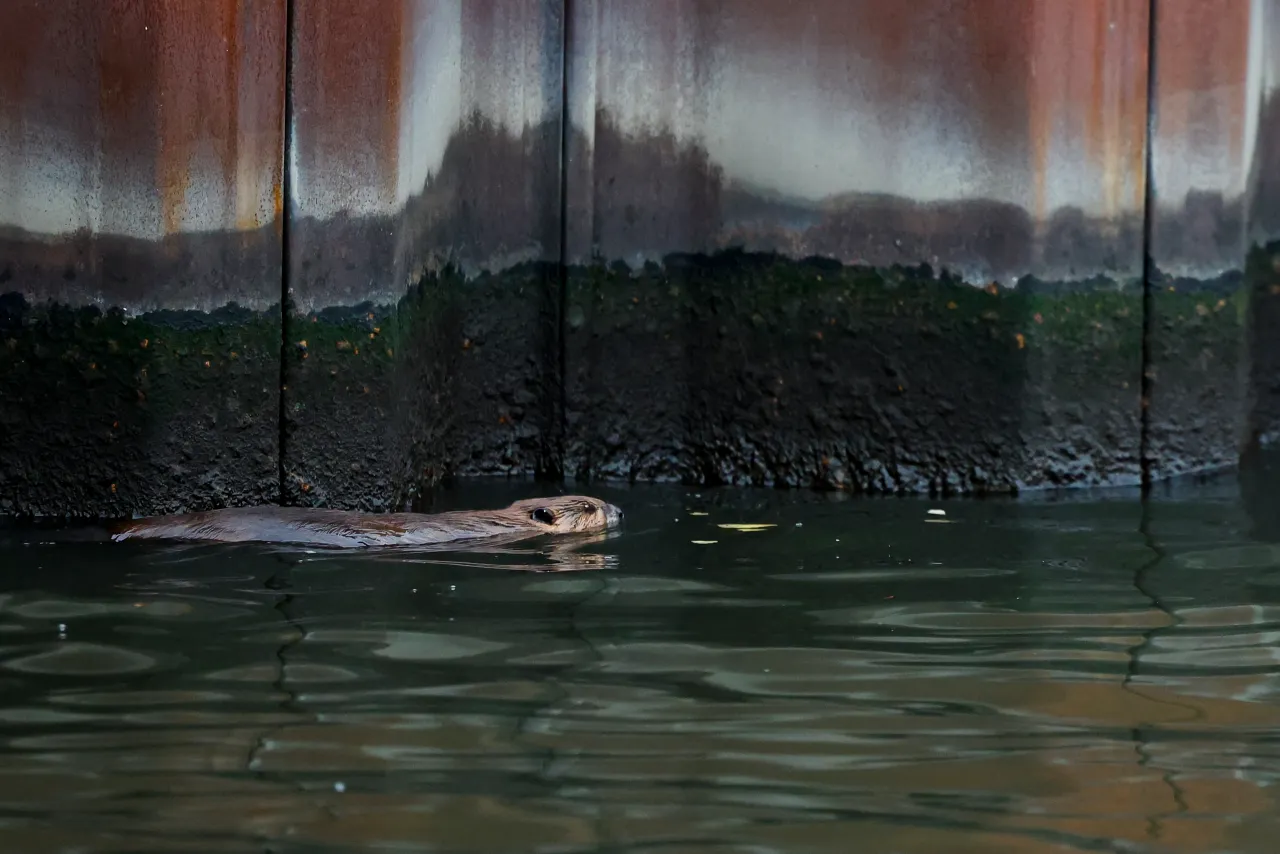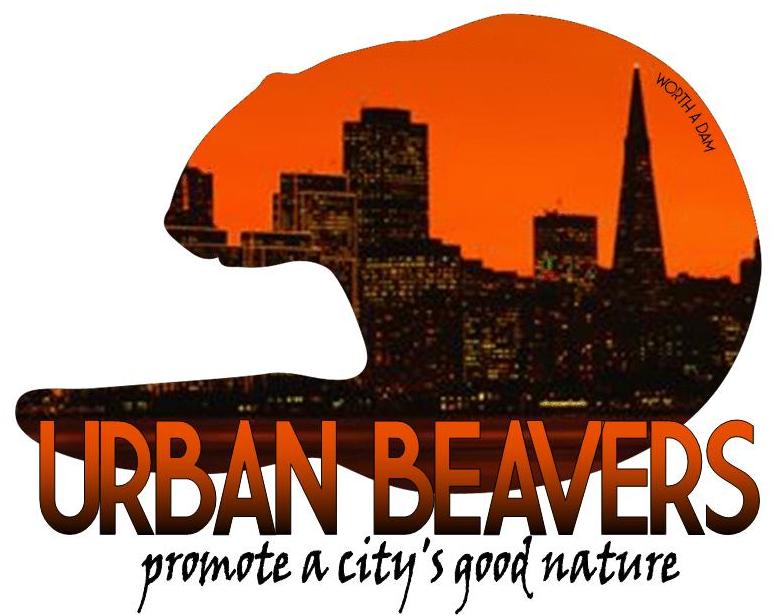I was very excited to see this headline appear yesterday. Bring it on Chicago. I want to learn everything!
Beaver survey aims to show the urban benefits of Chicago’s ‘ecosystem engineers’
Every night for the last few weeks, the wildlife biologist has checked the live feeds of trail cameras she’s installed along stretches of the river’s two branches hoping to spot the largest living rodent in North America, weighing anywhere from 25 to 90 pounds.
A beaver swims along the edge of the South Branch of the Chicago River on Nov. 20, 2024. (Eileen T. Meslar/Chicago Tribune) “I wonder where that little guy was heading,” said Stephen Meyer, who was driving the boat, as he revved the engine and watched the beaver make its way north from across Ping Tom Memorial Park in Chinatown. Beavers are mostly active at night, but as they prepare for winter in the late fall they might be seen during the day as well.
Meyer is a volunteer coordinator at the local nonprofit Urban Rivers, which is funding and lending resources such as the boat to Clark, who has been contracted as an independent researcher for a two-year study in Chicago — the first of its kind to try to understand beaver populations in such an urbanized location.
Hey I wonder if she’s heard about Martinez?
“No studies have been done here and, as far as I have found in the literature, this will be the most urban environment that beavers have been surveyed and studied in,” Clark said. “The only other place was maybe Seattle, but the (human) population of that area was still significantly less than the population density of Chicago.”
Sheesh not so much as a mention! Didn’t you even read Eager?
Other urban areas where beaver populations have been studied include Saskatoon, Saskatchewan, and Flanders in Belgium. But, for the most part, beaver research is done in wild, remote locations with little to no human presence. Her only other sighting was in Yellowstone National Park — “the epitome of nature.”
So now in Chicago, the third most populous U.S. city, Clark has set out to learn: “How much usable space do the beavers even have? And how do we live alongside wildlife?”
Apparently we can manage for a decade. We’ll definitely be talking. I look forward to the Chicago beaver festival!
On the recent outing, Clark was looking for signs of beaver activity such as felled trees or trunks with teeth marks, piles of branches and debris known as lodges on the riverbank, and scent mounds that the animals use to mark their territory.
In a short pit stop before getting to the study survey area, Meyer approached an artificial floating garden — one of many that Urban Rivers is installing along the river to restore native wetland habitats, which provide food and shelter for wildlife, as well as natural spaces for humans.
Scientist Sammie Clark, with Urban Rivers, inspects a possible beaver scent mound on a floating garden built and maintained by Urban Rivers along the South Branch of the Chicago River as Stephen Meyer, an Urban Rivers volunteer coordinator, adjusts a camera, Nov. 20, 2024. (Eileen T. Meslar/Chicago Tribune) This specific island was commissioned from Urban Rivers by the real estate company Prologis right off a South Branch property as part of a commitment to sustainable development by including critical habitat in the still industrialized area. Further up the river, along the North Branch Canal and east of Goose Island, the nonprofit has led a restoration project called the Wild Mile, where floating gardens mimic natural wetland habitat like the ones that might have been found in the city before it was developed.
Beavers were essentially eliminated from Illinois by the early 1900s after decades of unrestricted trapping practices but reintroduced between the late 1920s and early 1950s. They are common throughout the state nowadays. This comeback mirrors the population’s nationwide recovery of 10 to 15 million from as many as 400 million before the arrival of European settlers.
But wetland habitats have been significantly reduced in the country since then — 90% of Illinois’ original wetlands have been destroyed by urban development and agriculture — so restoring these natural habitats is key to sustaining beaver population numbers, experts say.
Urban beavers are a great passion of mine. You might have come across something of my interest on the internet.
Hmm.








































